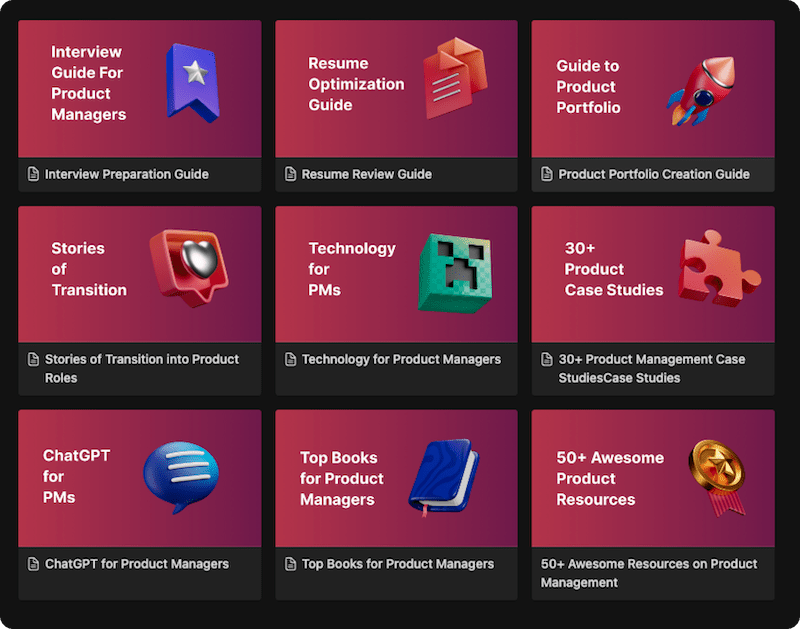Imagine you’re standing at the foot of a great mountain with the goal of reaching the summit. How many ways are there to get to the top? One person might immediately look for the single, well-marked trail on a map. But what if you were asked to come up with every possible way? You would think of the marked trail, yes, but also a steep, direct climb, a long and winding scenic route, a path that follows the river, or maybe even a wild idea like a ski lift or a tunnel through the middle. This process of exploring many possible paths, of “going wide” to generate a vast landscape of options, is the essence of Divergent Thinking.
Divergent thinking is the engine of creativity. It’s a mode of thought that breaks free from the constraints of a single “correct” answer and instead ventures into the realm of spontaneous, free-flowing, and unexpected possibilities. It is the art of asking “What if?” and “Why not?”
This guide is your map to mastering this powerful cognitive tool. We will explore what divergent thinking is, its crucial partnership with its opposite, convergent thinking, and provide you with practical techniques to unlock this creative potential in yourself and your team.
Definition & Origin
The term “divergent thinking” was coined in the 1950s by American psychologist J.P. Guilford, a pioneer in the study of human intelligence and creativity. He was one of the first to distinguish between two types of thinking:
- Convergent Thinking: The ability to arrive at a single “correct” answer (e.g., solving a math problem). This is what traditional intelligence tests typically measure.
- Divergent Thinking: The ability to generate multiple, unique ideas or solutions from a single starting point.
Guilford’s work established divergent thinking as a measurable and essential component of creativity, shifting the focus of psychological research beyond just logical reasoning.
Benefits & Use-Cases: Why We Need to Think Divergently
In a world that often rewards quick, correct answers, deliberately making space for divergent thinking is a strategic advantage.
- Fosters Genuine Innovation: Breakthrough ideas rarely come from the first, most obvious solution. Divergent thinking creates the large pool of raw ideas from which true innovations can be found.
- Breaks Creative Blocks: When a team is stuck on a problem, switching to a divergent mode can break them out of their rut by encouraging wild and unconventional thinking.
- Encourages Diverse Perspectives: By deferring judgment, it creates a psychologically safe environment where all team members, regardless of seniority, feel comfortable sharing ideas.
- Improves Problem Definition: Exploring many possible solutions can often lead to a deeper and more nuanced understanding of the problem itself.
- Generates a Wealth of Options: It provides a rich inventory of ideas that can be evaluated, combined, and refined during a later stage of problem-solving.
How It Works: A Practical Guide to Divergent Thinking Techniques
Divergent thinking is a skill that can be cultivated. Here are some of the most effective techniques to facilitate it:
1. Brainstorming
This is the classic technique. The key is to follow the core rules established by Alex Osborn:
- Defer Judgment: This is the most important rule. There are no bad ideas during a brainstorm.
- Encourage Wild Ideas: Go beyond the obvious. The most outlandish ideas can sometimes spark the most practical solutions.
- Build on the Ideas of Others: Use “yes, and…” thinking to combine or improve upon ideas.
- Go for Quantity: Aim for a specific, high number of ideas (e.g., “Let’s come up with 100 ideas in 20 minutes”).
2. Mind Mapping
Start with a central concept or problem in the middle of a page. Then, radiate outward, creating branches and sub-branches for related ideas, words, and concepts. This visual, non-linear method allows your brain to make connections it might otherwise miss.
3. SCAMPER
SCAMPER is a mnemonic for a set of creativity-sparking questions you can ask about an existing product or idea:
- Substitute: What can you swap or replace?
- Combine: What can you merge with something else?
- Adapt: What could you adapt or borrow from another context?
- Modify: Can you change the scale, shape, or color? Magnify or minify it?
- Put to another use: Can you use it for something else?
- Eliminate: What can you remove or simplify?
- Reverse: Can you rearrange or reverse the process?
4. Freewriting or Journaling
Set a timer for 5-10 minutes and write continuously about a topic without stopping, editing, or censoring yourself. The goal is to bypass your internal critic and get your raw thoughts onto the page.
Mistakes to Avoid: Common Pitfalls
- Judging Ideas Too Early: The moment someone says “that will never work,” the divergent phase is over. Deferring judgment is non-negotiable.
- Stopping Too Soon: The first third of a brainstorming session usually produces the most obvious ideas. The most creative and valuable ideas often emerge in the final third, when the brain is more fatigued and has to stretch further.
- Having a Homogeneous Group: The best divergent sessions come from cross-functional teams with diverse backgrounds, experiences, and perspectives.
- Not Having a Clear Prompt: Divergent thinking is not a directionless daydream. It needs a clear, focused prompt or problem statement to guide the exploration (e.g., “How might we improve the customer onboarding experience?”).
Examples & Case Studies: Divergent Thinking in Action
Divergent thinking is at the heart of all creative and innovative work.
A classic test of divergent thinking is the “Alternative Uses Test,” developed by J.P. Guilford. The prompt is simple: “How many uses can you think of for a paperclip?” A convergent thinker might say “To hold papers together.” A divergent thinker would generate a long list: a tool to reset electronics, a makeshift antenna, a lock pick, a small hook for fishing, a piece of art, a bookmark, a catapult for rubber bands, and so on.
In a business context, imagine a product team at a SaaS company trying to name a new feature. They would hold a divergent brainstorming session to generate a massive list of possibilities-serious names, funny names, abstract names, descriptive names. They might generate over 100 options without any discussion of which one is “best.” This list of raw material is the output of their divergent thinking.
When the founders of Airbnb were struggling, they used divergent thinking to solve their problem. The problem was low bookings. Instead of just thinking “we need more ads,” they brainstormed every possible reason people weren’t booking. One wild idea was that the photos were bad. This led them to the unconventional solution of flying to New York to take professional photos themselves-a breakthrough that came from exploring a wide range of possibilities.
Divergent vs. Convergent Thinking: The Creative Power Couple
Divergent thinking is only one half of the creative process. Its essential partner is Convergent Thinking.
| Aspect | Divergent Thinking | Convergent Thinking |
| Goal | To generate many possibilities. | To find a single, best solution. |
| Process | Spontaneous, non-linear, free-flowing. | Logical, systematic, analytical. |
| Focus | Quantity, exploration, imagination. | Quality, evaluation, judgment. |
| Analogy | The gas pedal of creativity. | The steering wheel and brakes. |
| When to Use | At the beginning of a project, when you need ideas. | After brainstorming, when you need to make a decision. |
Export to Sheets
True innovation requires a rhythm of both. You must first “go wide” with divergent thinking to create a rich set of options, and then “go narrow” with convergent thinking to analyze those options and choose the best path forward. Divergence without convergence is chaos. Convergence without divergence is stagnation.
The Double Diamond Model
This rhythm is famously visualized in the Double Diamond, a design process model developed by the British Design Council. It shows the innovation process as two “diamonds.” The first diamond is for the problem space: you diverge to discover all aspects of the problem, then converge on a clear problem definition. The second diamond is for the solution space: you diverge to ideate many possible solutions, then converge on the single solution you will build and test.
Conclusion
We began our journey by imagining the many paths to a mountaintop. This is the simple, powerful promise of divergent thinking: it gives you permission to see the entire landscape of possibilities before you start your climb. It’s a deliberate escape from the pressure of finding the single “right” answer and an entry into the creative, expansive world of “what if.”
However, the true mastery of innovation lies not in a permanent state of divergence, but in the skillful dance between exploring and deciding. Divergent thinking is the glorious, messy, and essential first step that fills your canvas with color, while its partner, convergent thinking, is the disciplined brushstroke that turns that color into a masterpiece. One without the other is incomplete.
In a world that constantly demands more creative solutions to increasingly complex problems, the ability to consciously quiet your inner critic and embrace a divergent mindset is no longer a “soft skill” reserved for artists. It is a critical competency for any team, leader, or individual who wants to break through the obvious and discover the extraordinary.
FAQ’S
The direct opposite is convergent thinking. Convergent thinking is a logical and analytical process that focuses on narrowing down options to find a single, correct, or best solution to a well-defined problem.
Brainstorming is a technique used to facilitate divergent thinking, but they are not exactly the same. Divergent thinking is the mode of thought itself (exploring many options), while brainstorming is a specific, structured activity designed to encourage that mode of thought in a group setting.
Absolutely. Like any cognitive skill, divergent thinking can be improved with practice. Regularly using techniques like mind mapping, freewriting, and challenging yourself with creative prompts (like the “Alternative Uses Test”) can strengthen your creative muscles.
Neither is “better”; they are complementary partners in problem-solving. Divergent thinking is essential for creativity and generating options, while convergent thinking is essential for making decisions and executing on a plan. A successful process requires a healthy balance of both.
The best time is at the beginning of a project or when you are stuck on a problem. Use it when the path forward is unclear, you need fresh ideas, or you want to challenge the team’s existing assumptions before committing to a direction.
The main downside occurs when it’s not properly managed. A divergent session without a clear prompt can become unfocused. More importantly, a team that stays in a divergent mode for too long without ever switching to convergent thinking can suffer from “analysis paralysis,” generating endless ideas without ever making a decision or taking action.
Learn better with active recall quiz
How well do you know What is Divergent Thinking? Let’s find out with this quick quiz! (just 10 questions)


